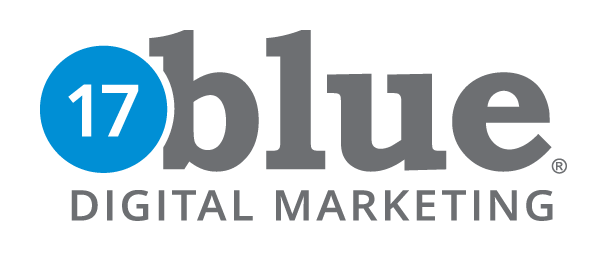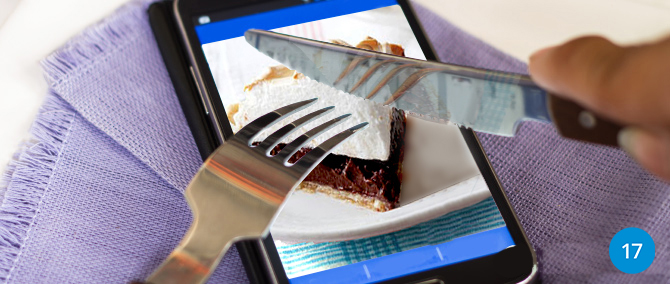The Right Ingredients:
Before her mouth-watering, double-chocolate meringue pie came out of her oven, my Grandma Louise pulled out flour, butter, salt, sugar, cocoa, milk, eggs and an index card with very worn edges. She only used real cocoa and ingredients she knew were fresh because she wanted the best results. Like Grandma, we need the right ingredients and a tried-and-tested recipe if we want the kind of results that keep ’em coming back for more.
1. Measuring Tools
Before you begin overhauling a website make sure you grab a few tools that help you measure accurately! Use Google Analytics or another web analytics program to gather data on your site’s performance. Pair this with a tool that can measure how your competitors are doing. There are plenty of choices for “sneaky” software to gather data. Here’s an article by KISSmetrics with “25 Sneaky Online Tools and Gadgets to help you spy on your competition.”
No redesign effort can have a measured ROI if you don’t know where you were before changes were made. Track and measure everything. Look for new traffic, returning traffic, time on site, most visited pages, entry and exit pages and other key measures to see what’s working well… or not at all. If you’re not comfortable with metrics, get some help from a pro who can help you determine which metrics to watch and what the data means.
2. Assemble Your Ingredients
It’s time to pull together the ingredients you’ll need to make this redesign a success.
A. DATA: Start with the data you pulled from your web analytics and measuring tools. Top metrics are usually: Visitors, Traffic Sources, Compare metrics for your own site and metrics from your competitors. Evaluate similarities and differences. Where do you rise to the top? Where are you lagging? What types and forms of information are your most successful competitors offering visitors? Be original. but pay attention to strategies that work and look for opportunities to outpace or outsmart the competition.
B. GOALS: It’s critical to have clear goals. Why are you redesigning? Are you improving UX (user experience)? Increasing conversions? Expanding your market? Define them, then set your data next to your goals and draw clear lines across the two. What’s meeting goals now? What’s failing? Where do visitors spend time? What do they ignore or avoid? This analysis helps define areas to test and improve.
C. BRAND ASSETS: It’s time to make sure your brand messaging and supporting visuals are clearly defined. Make sure your words, colors, and imagery across the site and other marketing materials are aligned with your audience, their interests and reflect your company’s core values. [related: Where to Start when Identifying Brand UVP] You’ve got about 4 seconds to make an impression and communicate value, so these elements should be on point and highly effective.
D. BUYER PERSONAS: Knowing who you are building trust and sales with is of the utmost importance. Key marketing pieces vary by tone, voice, format and channel based on WHO you are talking to. Your website should be designed for your clients and customers engagement, not for your preferences. What problem do they need solved? What do they value? What resonates with them? Keep your best buyers in mind for all of your design and strategy plans.
3. Pull Out the Recipe Card
Before design and development begin, get your plans in order. Establish your budget and timeline for the project. Whether developing in house or employing an agency, set clear expectations for the team involved. If your budget doesn’t support building the mega-site you dream of today, plan and develop in phases. Ensure your development team understands the long term goals. It will save you headaches and cost later if initial plans and coding align with your future requirements.
During the planning phase, you’ll want to address the following areas:
- Mobile-friendly requirements
- CMS/Platforms
- Hosting & Security Needs
- Site Structure, UX & Navigation
- URL Mapping & Redirects
- Content Planning
4. Blend Design & Content Well
As wire-frames and initial design concepts are constructed, work toward a flow that engages users in an experience. That engaging experience should produce specific actions and outcomes. Plan content and CTAs (calls to action) throughout the site that help visitors see the value your company brings to them. Engage them in learning, communicating and buying opportunities. Make sure you’re planning for inbound marketing strategies up front. [related: Inbound Marketing – Method over Madness]
Remember most traffic is on mobile devices, so today it’s important to design for mobile UX – even over desktop users. Ask your design team specific questions like “What will a visitor see/do first, second, & third?” Evaluate how design and imagery strengthen or weaken your brand in the market. Make sure that you understand the designs and how they support your goals for the website and your business.
5. Simmer and Stir the Code
After plans and designs are approved, it’s time for development to begin. Depending on your team and the complexity of the project, development may be a matter of days or weeks. In some cases, complex development can take months. In those cases, an agile approach is preferred because it gives you incremental development with access, review, and testing along the way.
Once the best platform is determined, finalize all content that will go on the site. Plan for text, photos, video and any new or revised content that is needed for the pages and sections of the site. Review work as the site is completed, and thoroughly before it’s called “done”. Be sure you’re comfortable with the CMS in place. Test links, redirects and all the functionality of your new site.
6. SEO Meringue: Top & Bake
Search Engine Optimization is the final – and ongoing – layer to your tasty website redesign. It takes time and commitment. On-page SEO is a first step, but a significant amount of today’s SEO efforts happen off-page through various channels. Here’s a few items to get you started with an SEO review:
- Is the navigation clear?
- Are short and long-tail keywords used naturally and strategically throughout your site pages in titles, headings and page/blog content?
- Is social sharing easy for visitors?
- Is there a plan for inbound marketing: content creation, distribution & promotion?
- Are your analytics, automation and tracking software(s) installed and working?
If you’re not comfortable with SEO processes and tools, get help from a pro to ensure that your site is positioned favorably with relevant, optimized content and distribution.
7. Slice and Serve: Website Launch
When it’s time to serve up your new site, be ready to test one more time. When the site is moved from the testing server to the live environment, perform a final round of checks in multiple devices and browsers. Verify redirects are still working. Make sure your development team is available in case anything requires debugging or action.
Then it’s time to start PROMOTING the good news. Share the new site with your customer base, your social channels and PR outlets. Let the world know you’ve done something amazing!
8. Enjoy. But Don’t Take a Nap!
After your newly redesigned site is launched, sigh and pat yourself on the back… you’ve done good. But don’t fall asleep now! Pay attention to your analytics data to see what’s getting real traction, spot any potential issues and analyze for pivots in the future. Continue A/B testing of variables on landing pages and CTAs to see what works best and implement the highest performers.
Implement that content plan for creating, posting and sharing new content regularly. Review SEO position and strategies moving forward. Your new site is a living, breathing epicenter for your business online, keep it fresh and vibrant for your visitors.





